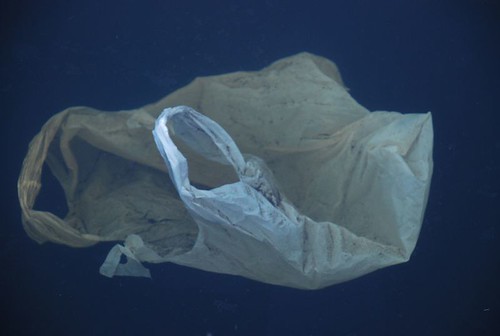
Photo Credit aussiegall
James has, in previous posts referred to the fact that IT is responsible for 2% of the world’s CO2 emissions but that it can have a disproportionate influence on the other 98%. This is something we believe fundamentally in GreenMonk so it is great to see others vindicating our position.
The Climate Group and the Global e-Sustainability Initiative (GeSI) recently published a report, independently audited by McKinsey and Company called Smart 2020. The report is a fascinating read and comes to the conclusion that ICT could:
deliver approximately 7.8 GtCO2e of emissions savings in 2020. This represents 15% of emissions in 2020 based on a BAU [Business As Usual] estimation. It represents a significant proportion of the reductions below 1990 levels that scientists and economists recommend by 2020 to avoid dangerous climate change. In economic terms, the ICT-enabled energy efficiency translates into approximately €600 billion ($946.5 billion) of cost savings. It is an opportunity that cannot be overlooked.
Apart from emissions associated with deforestation, the largest contributors to climate change are transportation and power generation, so how could IT help these functions?
According to the report the use of
- Smart motor systems – optimised motors and industrial automation would reduce 0.97 GtCO2e [0.97 giga tons CO2 emissions] in 2020, worth €68 billion ($107.2 billion)
- Smart logistics – global savings from smart logistics in 2020 would reach 1.52 GtCO2e, with energy savings worth €280 billion ($441.7 billion)
- Smart buildings – smart buildings technologies would enable 1.68 GtCO2e of emissions savings, worth €216 billion ($340.8 billion) and
- Smart grids – smart grid technologies were the largest opportunity found in the study and could globally reduce 2.03 GtCO2e , worth €79 billion ($124.6 billion)
Even though we have been heavily promoting the use of smart grids and demand response on this blog I was impressed that they could reduce CO2 emissions by 2 giga tons by 2020. This is one of the reasons why I was super-excited today when SAP’s Mike Prosceno invited me to attend their SAP for Utilities conference which is going to be in San Antonio Texas in October. This is a conference about the future of utilities and there will be a big focus on smart grids, smart meters and AMI (Advanced Metering Infrastructure).
How will IT help reduce emissions? It comes back to that old chestnut – if you can’t measure it, you can’t manage it.
Or as Steve Howard, CEO, The Climate Group said in his opening address in the report:
When we started the analysis, we expected to find that ICT could make our lives ‘greener’ by making them more virtual – online shopping, teleworking and remote communication all altering our behaviour. Although this is one important aspect of the ICT solution, the first and most significant role for ICT is enabling efficiency.
Consumers and businesses can’t manage what they can’t measure. ICT provides the solutions that enable us to ‘see’ our energy and emissions in real time and could provide the means for optimising systems and processes to make them more efficient. Efficiency may not sound as inspirational as a space race but, in the short term, achieving efficiency savings equal to 15% of global emissions is a radical proposition.







